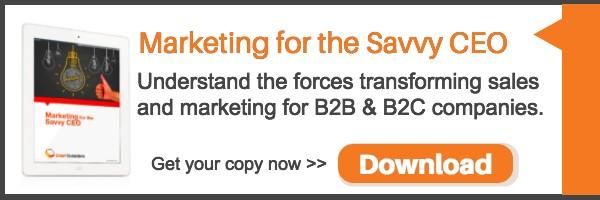CEO Blog - Advice for CEOs on growth and scaling
A Best Marketing Practice: Cultivating “Lead” Customer Relationships for Breakthrough Products and Services


It’s been many years since I learned what a “lead” customer is and how to build lead customer relationships to build confidence and reduce risks of new product or service launches. The concept of a lead customer, or lead user, is probably one of the most beneficial best practices I’ve used in marketing and product management roles. Want to design and launch a breakthrough product? The lead customer approach is absolutely a winner.
The lead user methodology was originally developed by Dr. Eric von Hippel of the Massachusetts Institute of Technology (MIT) and first described in the July 1986 issue of Management Science. You can read a revised version of the original article here.
At its core, the lead customer approach is very different from traditional market research with its focus on information collection from leaders in the target market. Leaders have characteristics and business models which themselves are innovative. They are often operationally excellent businesses with a passion for continuous improvement. They are open to innovations which offer the potential for significant market differentiation and material impact on revenues and costs.
In short, lead customers are demanding. They are not easy to do business with. They may not give you high satisfaction or loyalty scores. What they do give you, however, is priceless—the opportunity to work collaboratively to design and pilot new products and services which fall into the breakthrough category.
And, if you can satisfy them, von Hippel argues that other businesses in the same industry will be satisfied as well as they look for the same operational benefits, giving you the opportunity to introduce a new product or service industry-wide.
A MINI-CASE STUDY: USING THE INTERNET TO MANAGE B2B PAYMENTS
I had the responsibility to define, build, and launch a new payment product as a group product executive at U.S. Bank. The bank was looking for a way to penetrate a new payments market --freight payments --which was estimated at $400B annually. Nice size market!
The bank had a relationship with the Defense Logistics Agency for other payment products, and a couple of weeks after I started in my role I got a call from our Washington D.C. relationship manager: “Hey, the Defense Logistics Agency (DLA) wants to look at your new product.” Problem was, there was no product, or service, or anything else. What I had was a 12-page PowerPoint that superficially described the working concept.
Next thing I knew, I was presenting the PowerPoint to forty (40) defense payment personnel. When I got done, one of the audience members stood up and said: “If you build that, I’ll be your first customer.”
Cool … a customer and the product didn’t even exist!
What happened next illustrates the value of a lead customer as the inventor of the logistics discipline. DLA had a strong interest in lowering payment costs, improving transaction accuracy, reducing process costs and time, and working with their shippers in a more positive relationship. They knew the issues and industry problems intimately. They also recognized a potential breakthrough product immediately even though it only existed as a PowerPoint presentation.
The key payments personnel in DLA worked with us to refine our requirements and functional specs, provided input into user design, provided beta test resources, provided pilot sites, and then, a year after testing the system, gave us a sole-source contract worth $1B in annual transaction volume.
That’s right, $0 to $1B in transaction revenues in 24 months.
The DLA personnel weren’t as tough as some lead customers I’ve done business with have been, but as logistics experts, they added subject matter expertise and an organizing force to get us started. The product was materially better even with release 1.0 as a result of their engagement. Our team and the DLA team worked closely together with an open dialog and mutual interest goals.
HOW TO APPLY THIS APPROACH
Got a product or a service idea or a concept that you absolutely, positively believe is a breakthrough? Got an existing customer which constantly challenges your product and marketing teams? You have the two ingredients required to start a lead customer relationship.
Selection of a lead customer includes building a profile based on these characteristics:
- Are never satisfied with their operational performance.
- Are always looking for ways to reengineer key business processes and apply technology to create business advantage.
- Are viewed by their competitors as operational innovators and thought leaders.
- Are viewed by industry analysts for their foresight in anticipating and addressing business and operational needs.
- Understand the role they have in a “lead customer” context, including a willingness to reshape their business practices and processes.
- Understand the risks, and rewards, of working together in new business and product development.
You’ll need to be open and not protective or defensive as new product or service development can be bumpy. Align your goals from the start. Build a relationship which integrates both teams through product design, build, test, and launch phases. Prepare to iterate features as you go to market and learn together. You might be pleasantly surprised with the results.
Let’s chat if you want to adopt a best practice to launch that killer idea!
This article is part of a series where I share practical experience learned over 25 years as a Marketing executive. I’m happy to engage with you if you want to expand on these ideas— and especially if you have a need, or know a company that does.
Topics: Alignment, Product Strategy, Business Growth Strategy, B2B Marketing
Thu, Aug 3, 2017- Press Releases
- Careers
- Case Studies
- Marketing Consultant Company
- Marketing Strategy Consultants
- Marketing Plan Consultants
- B2B Marketing Consultants
- Virtual CMO
- Marketing Consultant Outsourcing
- Fractional CMO
- What is a Fractional CMO
- Healthcare Marketing Consultant
- Marketing Consultant Houston TX Texas
- Marketing Consultant Texas TX
- Marketing Consultant Bay Area
- CEO Blog
- Ebooks Plus
- Executive Marketing Consultants
- Product Marketing Consultants
- B2C Marketing Consultants
- Virtual Marketing Consultants
- Senior Marketing Consultants
- Temporary CMO
- Hire a CMO
- Fractional CMO Salary
- Fractional CMO Responsibilities
- Marketing Consultant Austin TX Texas
- Marketing Consultant Dallas TX Texas
- Marketing Consultant San Antonio
- Helping Private Equity
- Private Equity Blog
- Leadership Team
- Privacy Policy
- Business Marketing Consultants
- Strategic Marketing Consultants
- Marketing Technology Consultants
- Sales and Marketing Consultants
- CMO Job Description
- CMO Salary
- Fractional CMO Agency
- Fractional CMO Services
- CPG Marketing Consultant
- Marketing Consultant San Diego
- Partners
Houston, TX 77056
© 2023 Chief Outsiders



